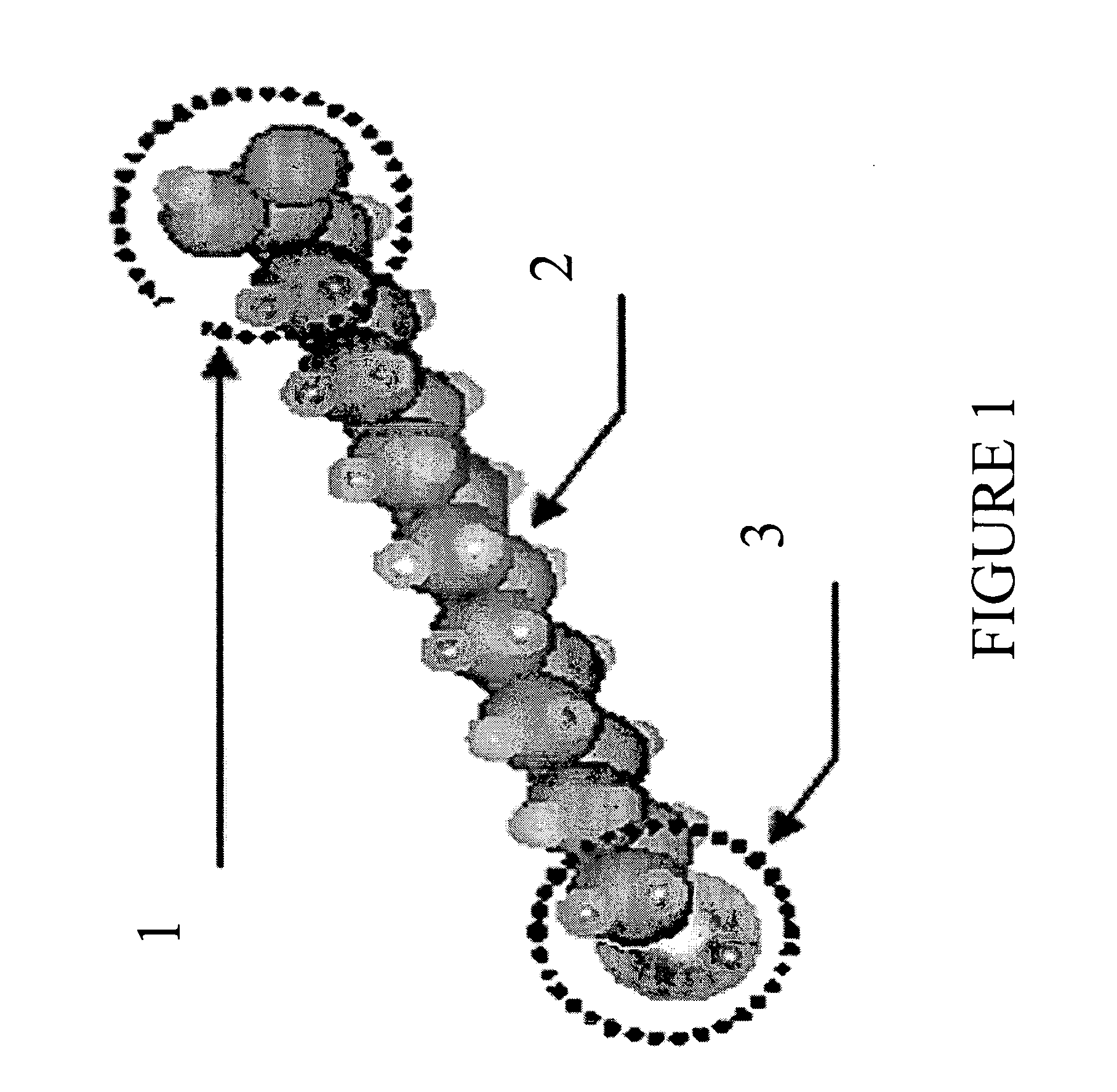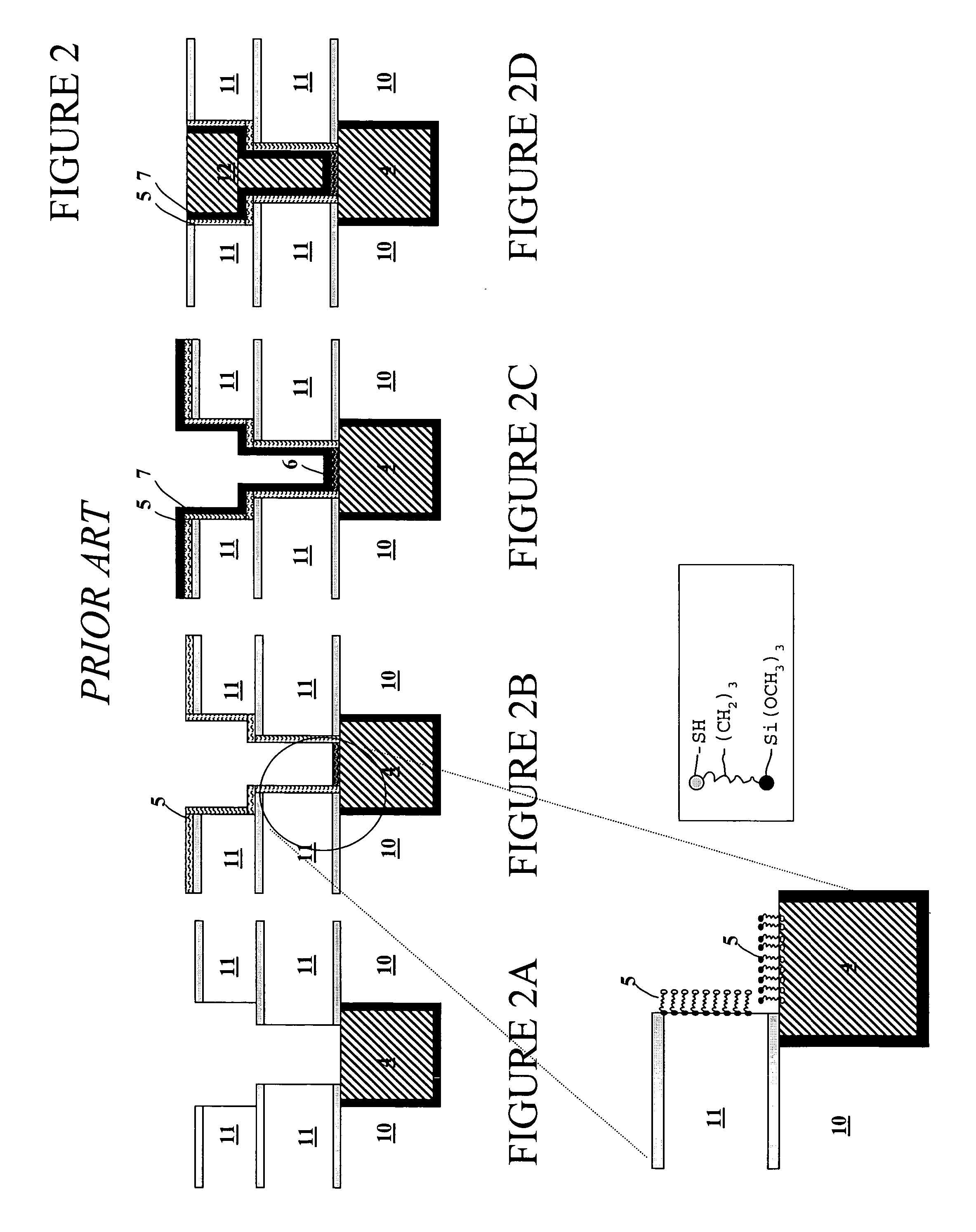Method for selective deposition of a thin self-assembled monolayer
- Summary
- Abstract
- Description
- Claims
- Application Information
AI Technical Summary
Benefits of technology
Problems solved by technology
Method used
Image
Examples
example 1
SAM Preparation and Coating Onto Wafer Substrates by Liquid Immersion
[0057] SAM-1 was prepared by immersion of Cu plated wafer substrates in a dilute solution of 1-decanethiol. The dilute solution was obtained by dilution of 1 ml of concentrated 1-decanethiol in 5000 ml solvent, using isopropyl alcohol (IPA) as solvent at ambient temperature for 2 h. The SAM-1 chemical structure is CH3—(CH2)9—SH, also referred to as C10 or 1-decanethiol. The SAM-1 material has 96% purity and is obtained from Sigma-Aldrich. The C10-modified wafer was then rinsed with copious amounts of IPA (30 sec) and dried under nitrogen. The substrates were then electroplated with copper. The Cu substrates were cleaned by immersion in 3.7% hydrochloric acid for 5 min. followed by rinsing with copious amounts of deionised water (2 min) and then solvent (30 sec) immediately before immersion in thiol solution.
[0058] SAM-2 was prepared by rinsing SiO2 substrate in toluene (10 sec) and then immersion in a dilute solu...
example 2
SAM Preparation and Coating Onto Wafer Substrates by Vapour Deposition
[0060] SAM-1 or SAM-2 can also be adsorbed from the vapour phase. SAM-1 or SAM-2 was contained in a pyrex glass tube and connected via a gas line to a high vacuum system containing the substrate of interest. There was a valve between the vacuum system and the glass tube. By opening this valve, the substrate contained in the vacuum system was exposed to the vapour of SAM-1 or SAM-2 for different times depending on the dosing pressure.
Example 3
Contact Angle (CA) Measurements
[0061] Water CA measurements were used to assess SAM quality, more specifically adhesion properties to the different substrates and thermal stability of the SAM layers. Static contact angles of deionized water deposited on the samples were measured in air using a software-controlled Video Contact Angle System OCA-20 (DataPhysics). All angles measured are subject to an error of ±0.1°. In addition, a variation of ±2.5° was typically observed ac...
example 3
Adhesion Measurements
[0065] Adhesion measurements were made on 4 wafers (indicated as D13, D14, D15 and D16 in Table 2) that continued processing (Cu seed deposition) after the SAM deposition. The adhesion measurements were performed by cleaving 2 sections (cords) from the wafer, applying tape (Scotch “red” crystal clear tape) to the pieces and pulling the tape from the cleaved edge of the wafer. The tape is pulled with a steady motion parallel to the wafer surface. Several (5-6) pieces of tape are attached to the wafer and pulled sequentially. The test was performed on 2 pieces per wafer to get sufficient sample size. Each tape pull is considered a trial. Failure is defined as a test which results in Cu on the tape. The yield is calculated by #_pass / #_trials (%). The results of the adhesion test showed good adhesion properties for SiO2 / SAM-2 / Cu (D16) and a poor adhesion for Cu / SAM-1 / Cu & Cu / SAM-1 / SAM-2 / Cu (D13 & D15).
TABLE 2Adhesion test resultsAdhesionwafersubstrateSAMPasstrial...
PUM
 Login to View More
Login to View More Abstract
Description
Claims
Application Information
 Login to View More
Login to View More - R&D
- Intellectual Property
- Life Sciences
- Materials
- Tech Scout
- Unparalleled Data Quality
- Higher Quality Content
- 60% Fewer Hallucinations
Browse by: Latest US Patents, China's latest patents, Technical Efficacy Thesaurus, Application Domain, Technology Topic, Popular Technical Reports.
© 2025 PatSnap. All rights reserved.Legal|Privacy policy|Modern Slavery Act Transparency Statement|Sitemap|About US| Contact US: help@patsnap.com



